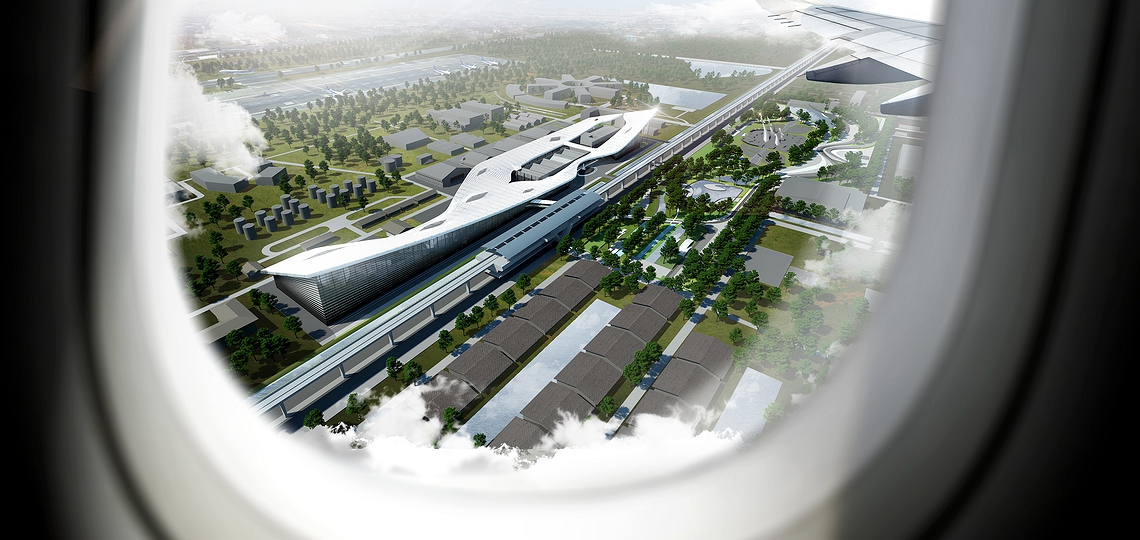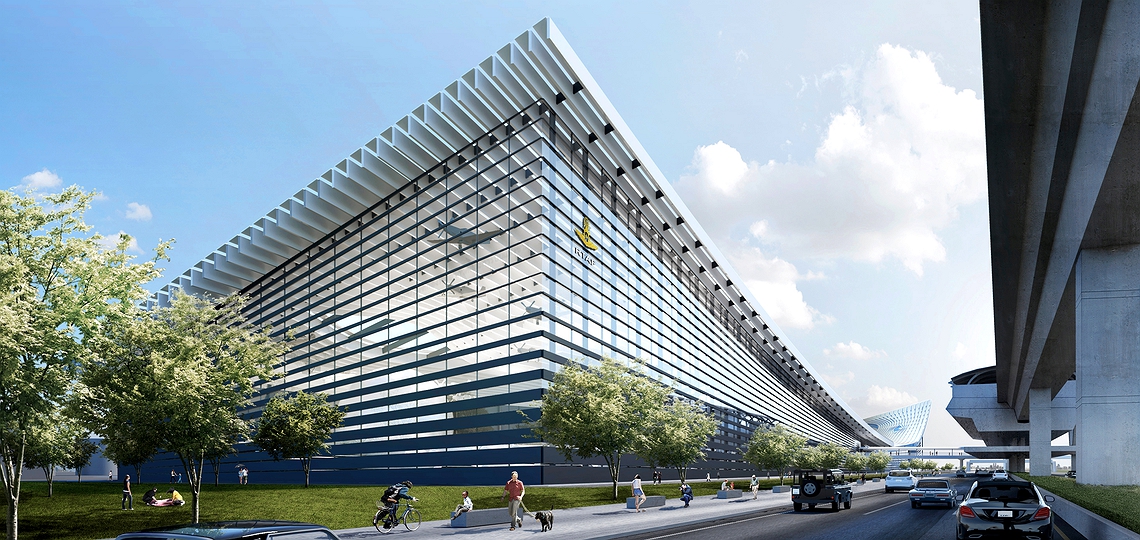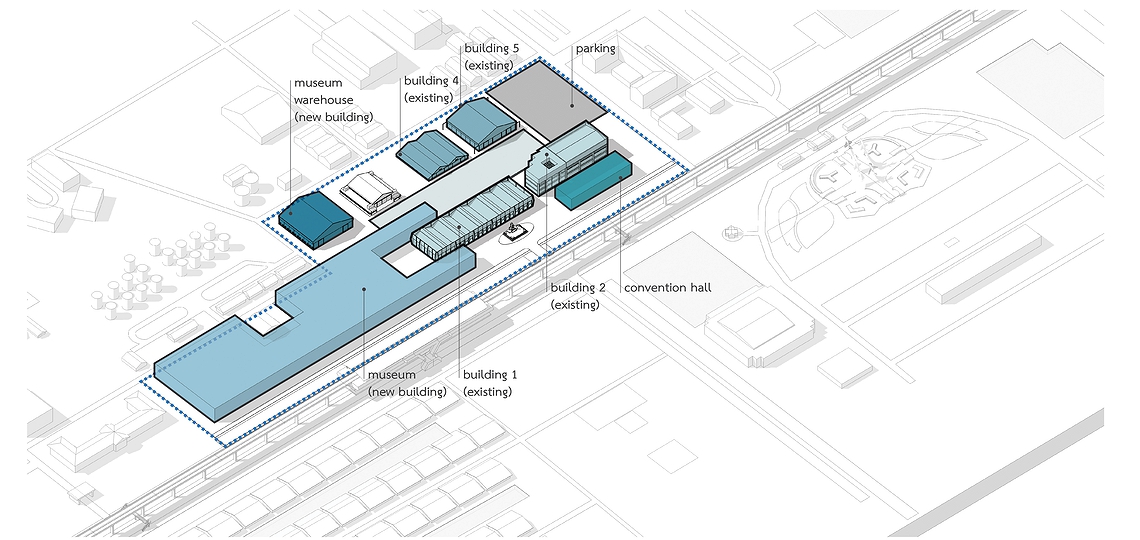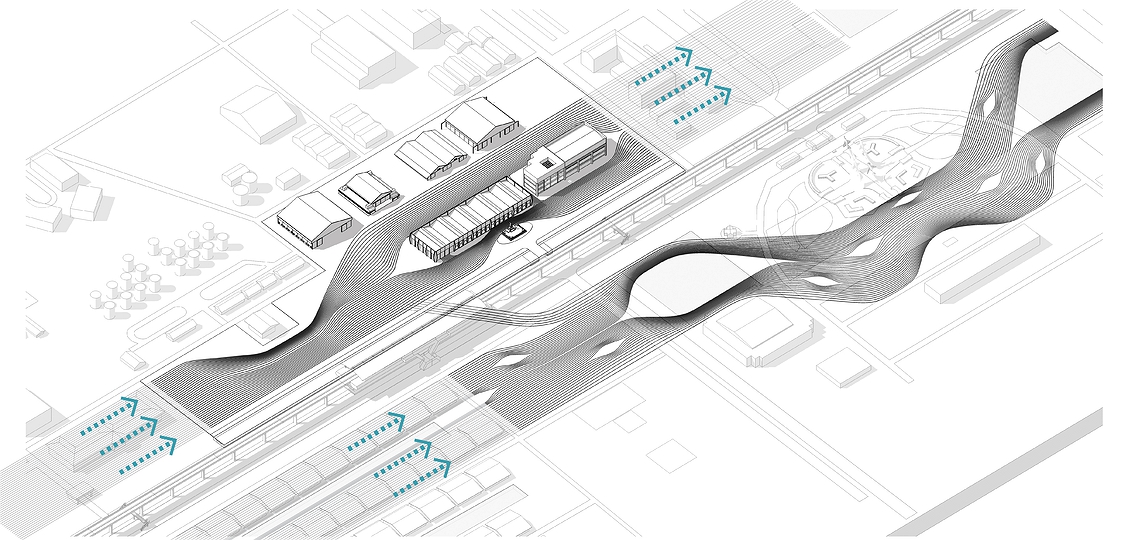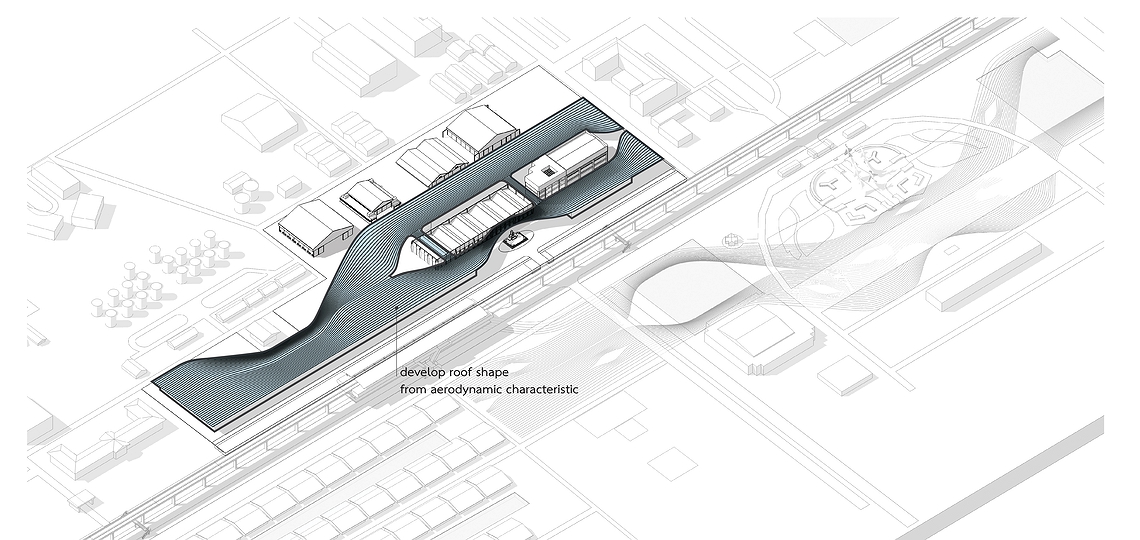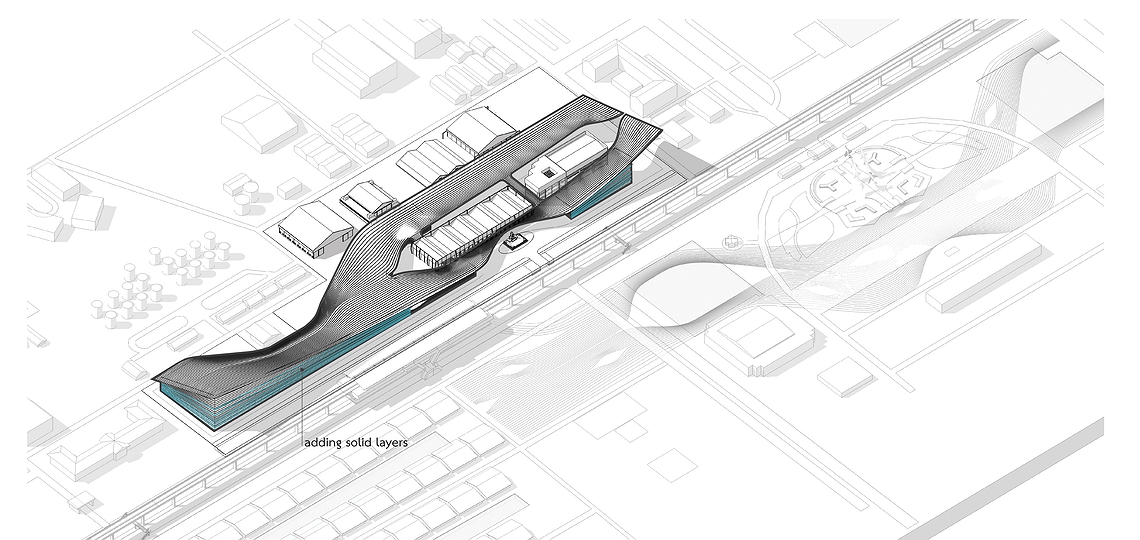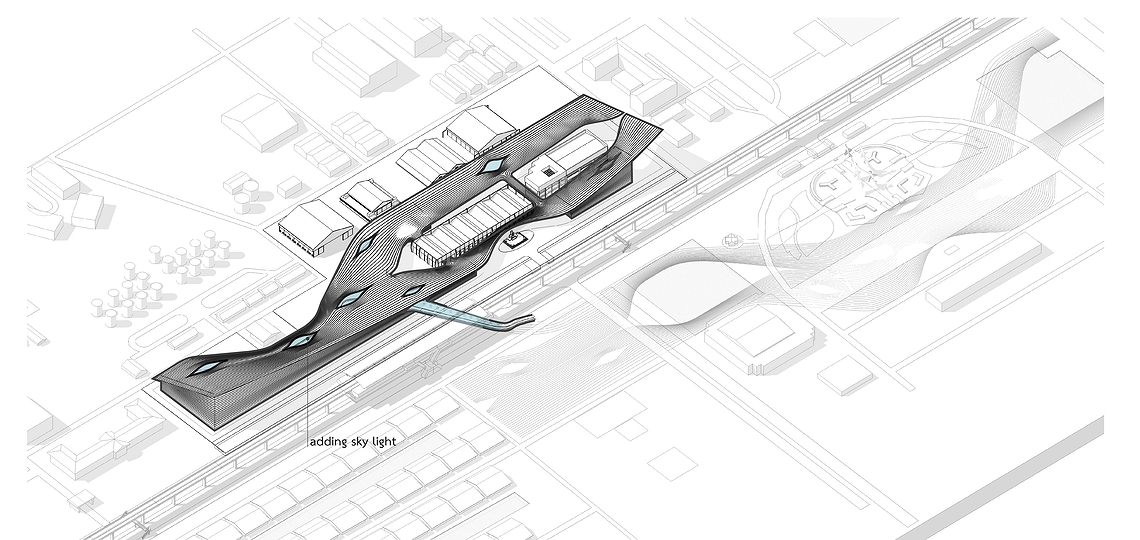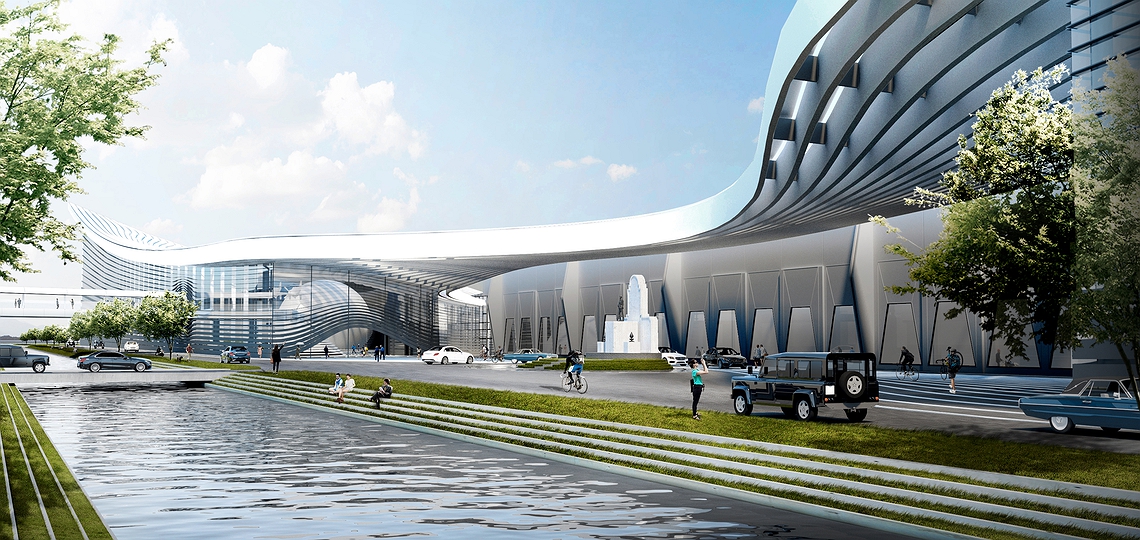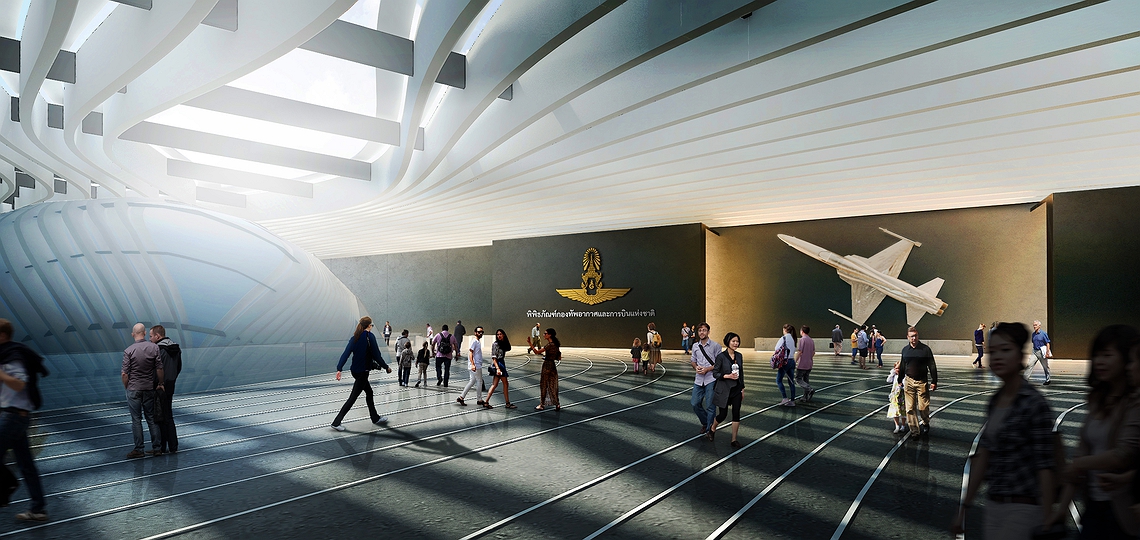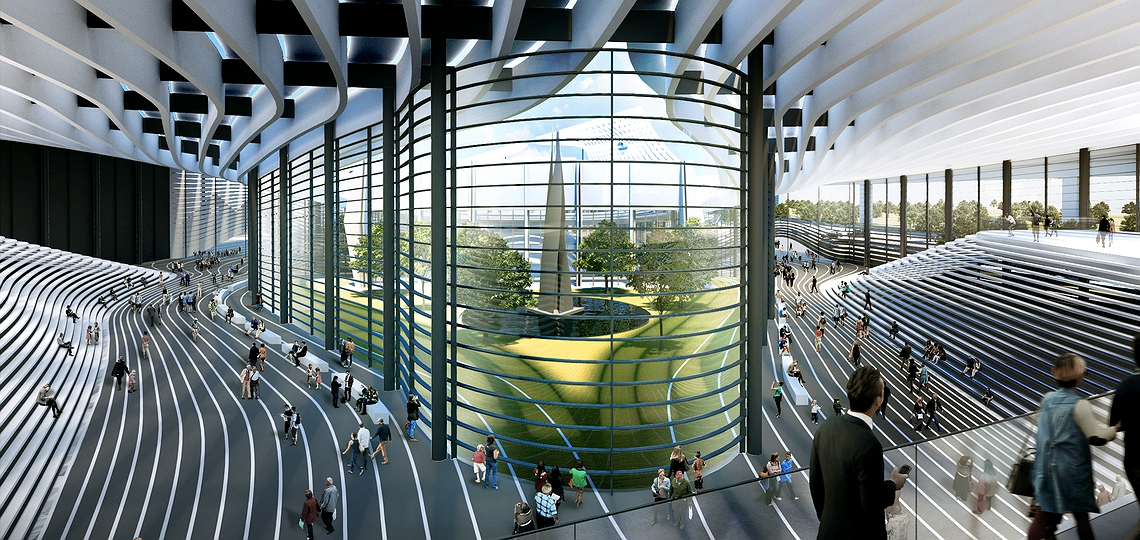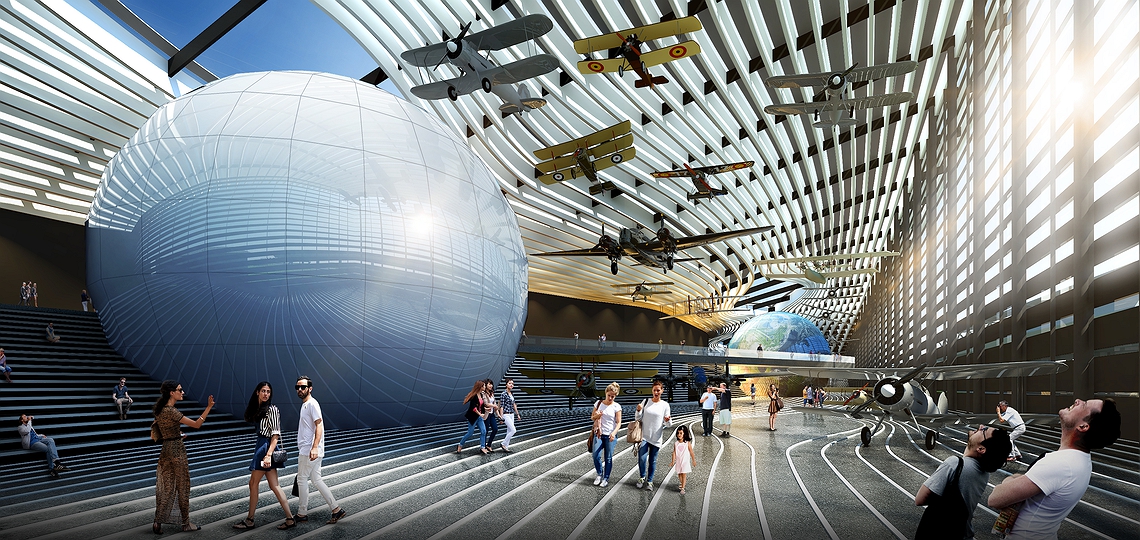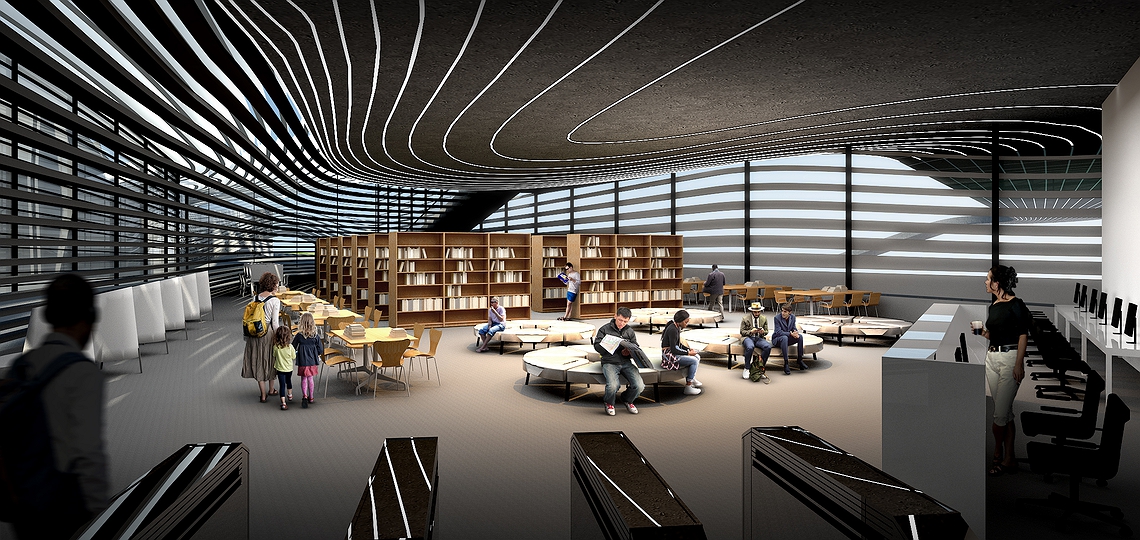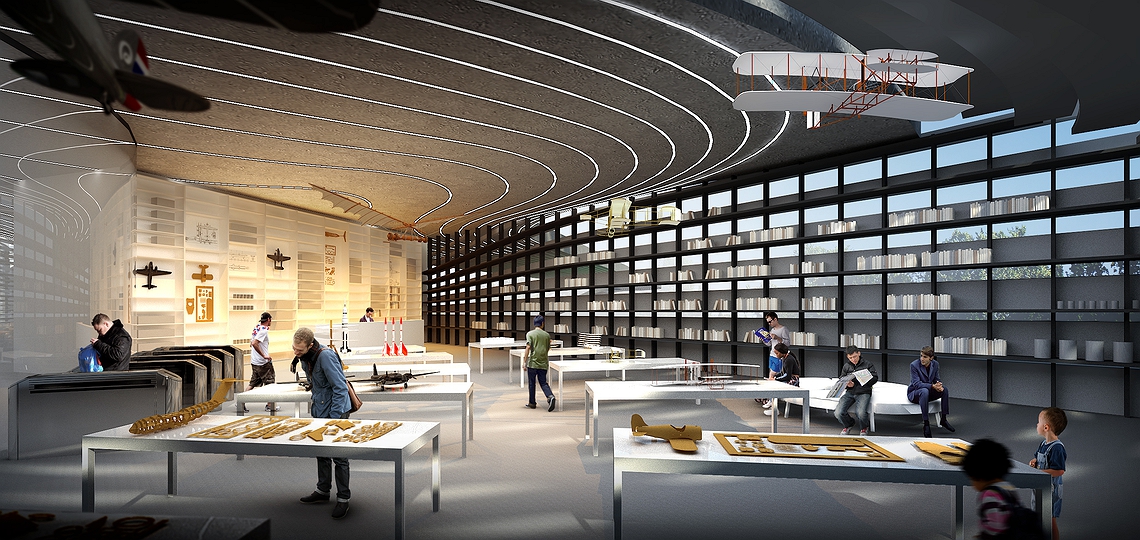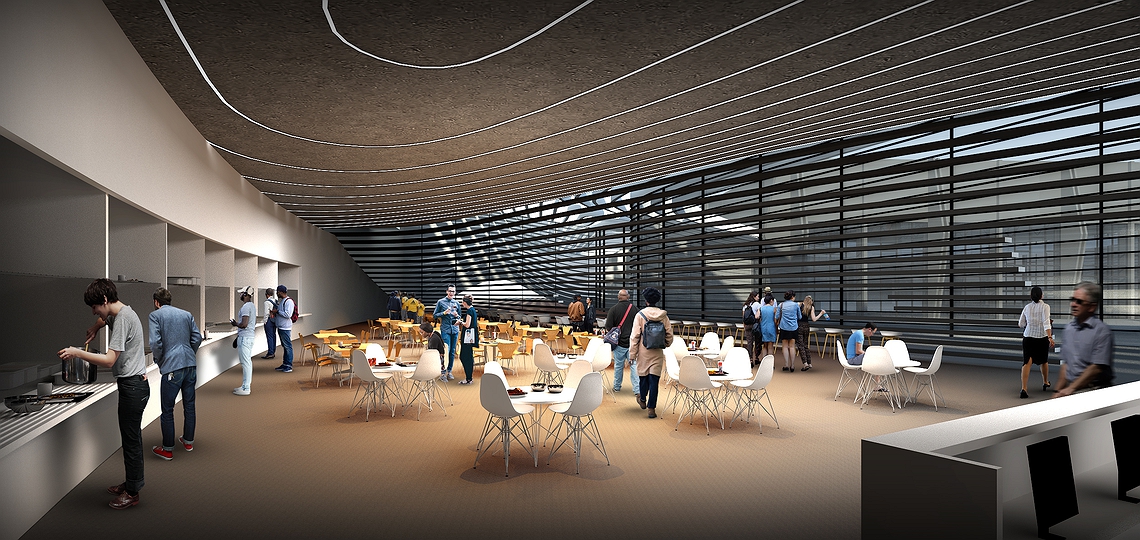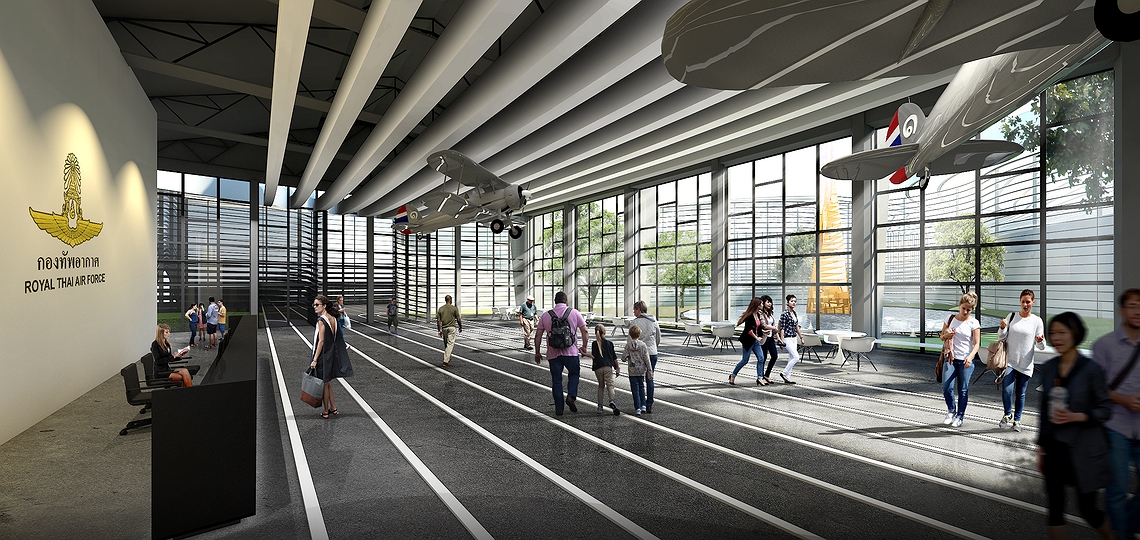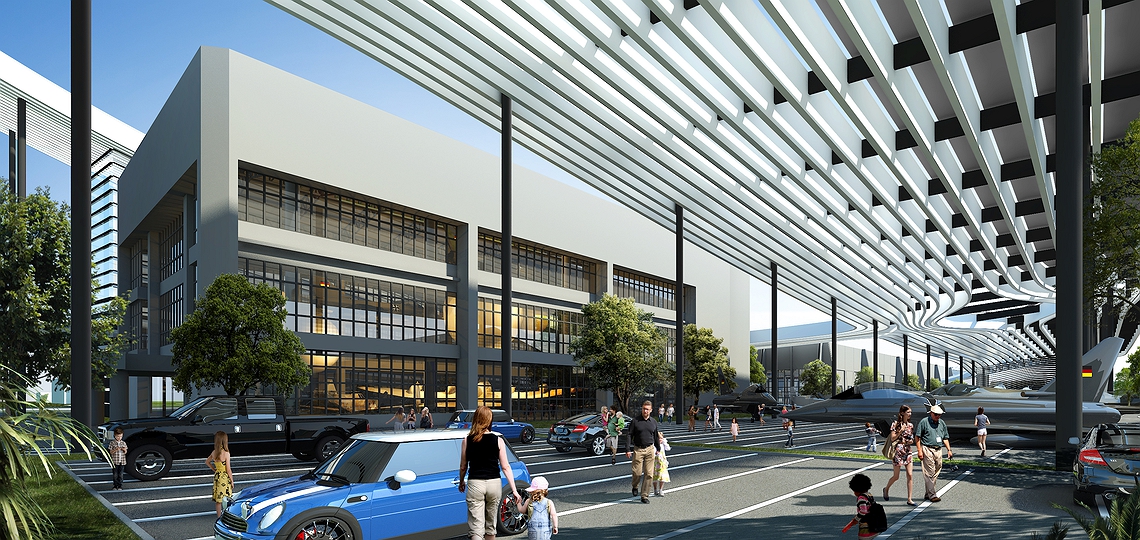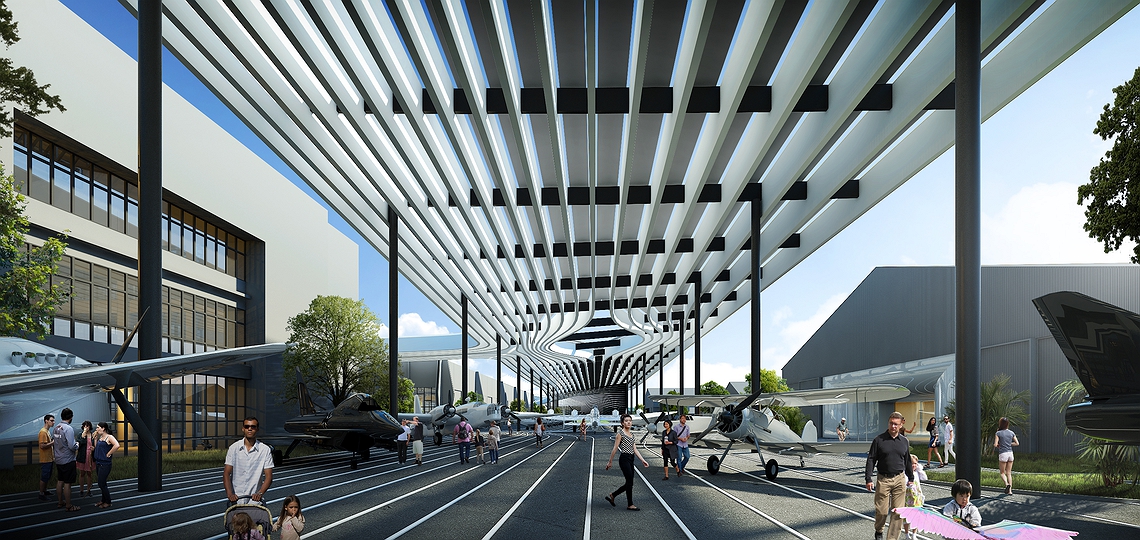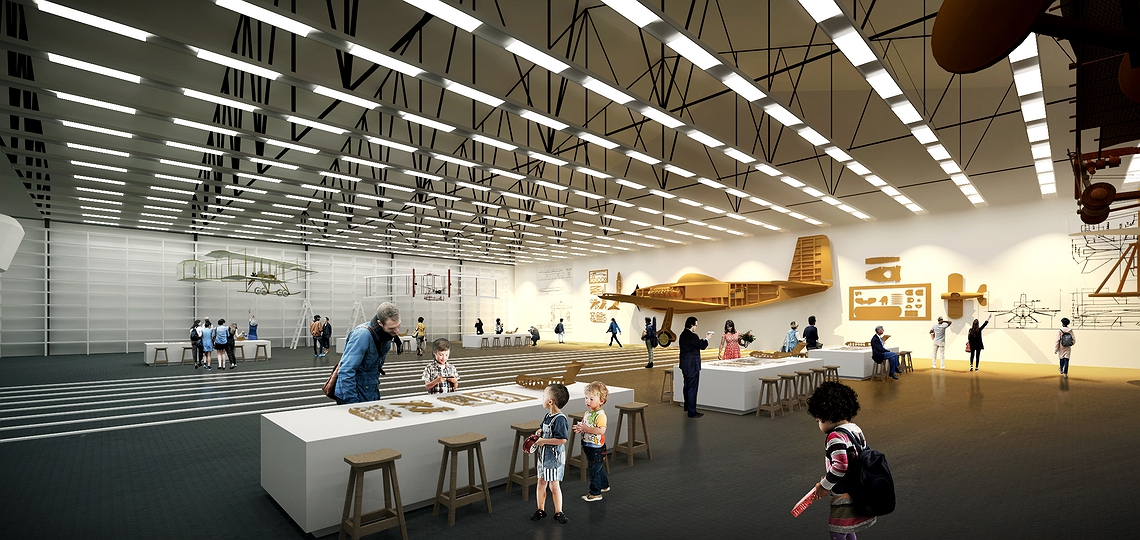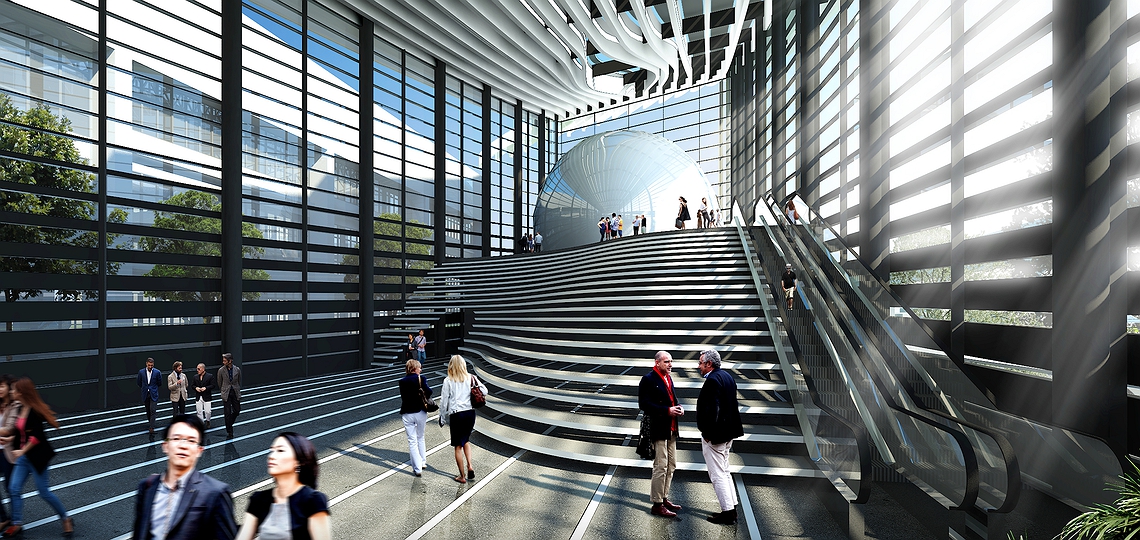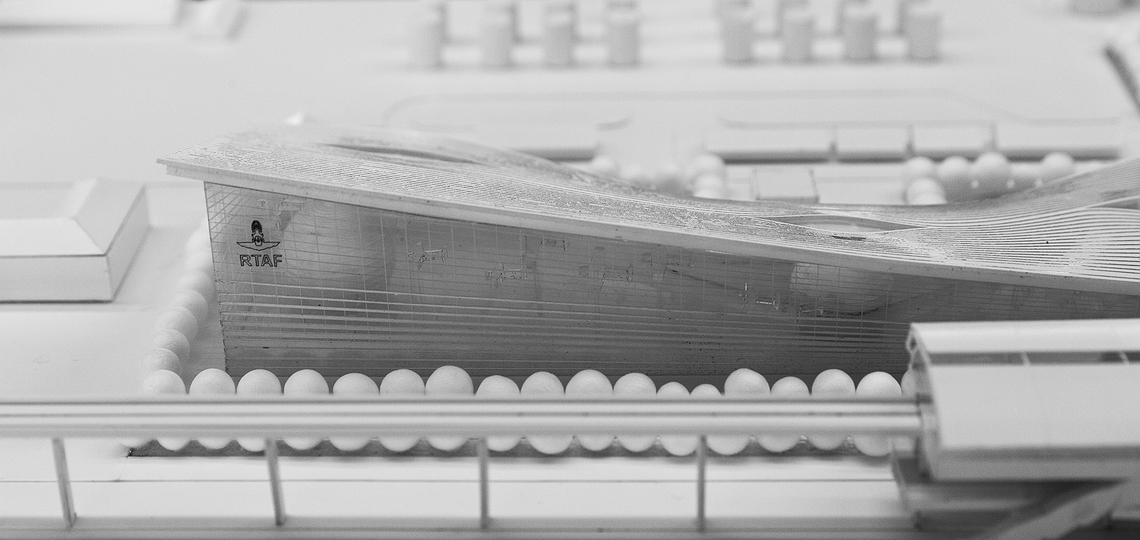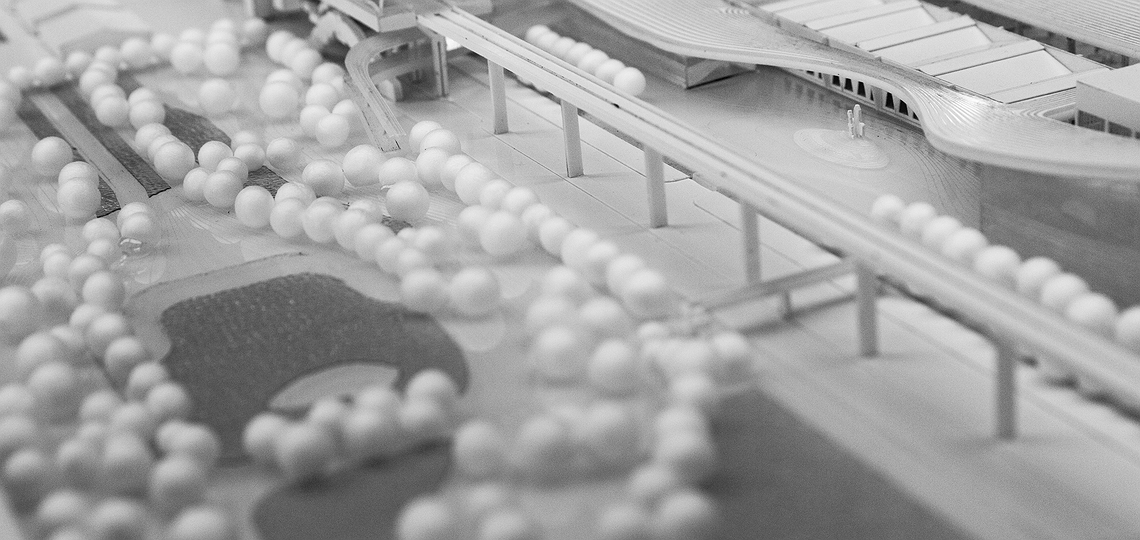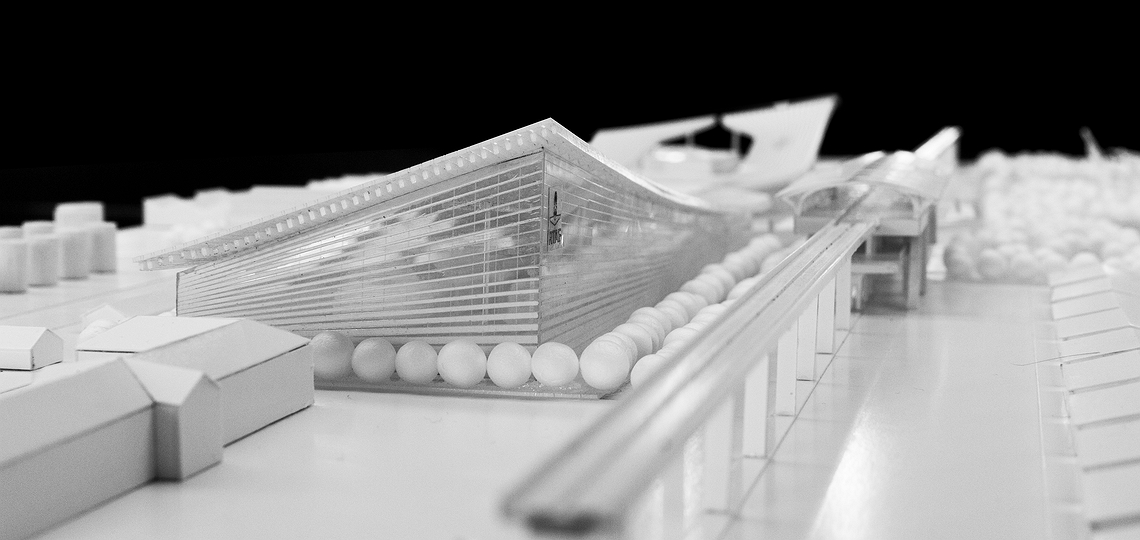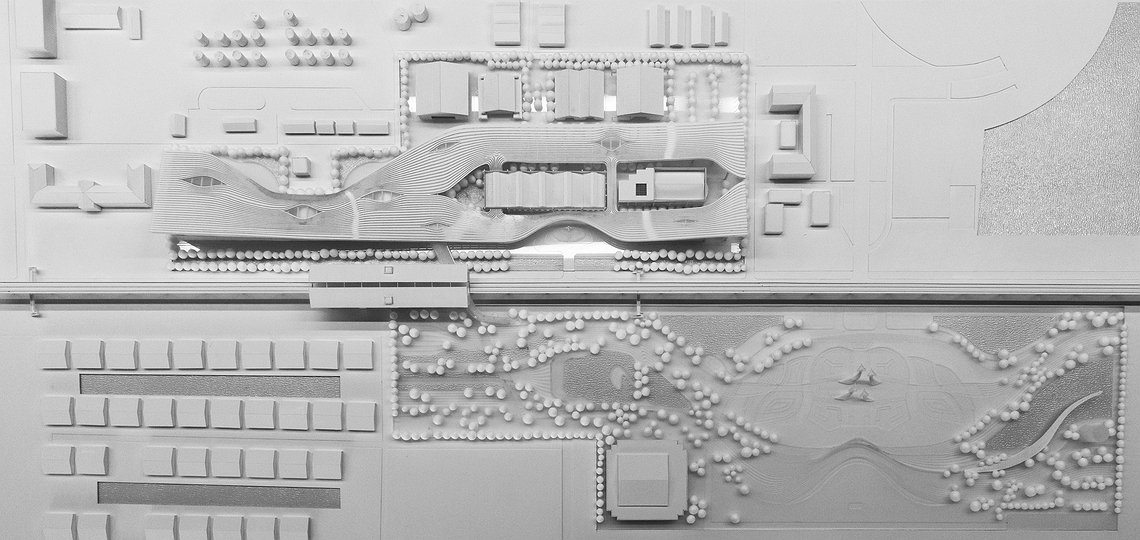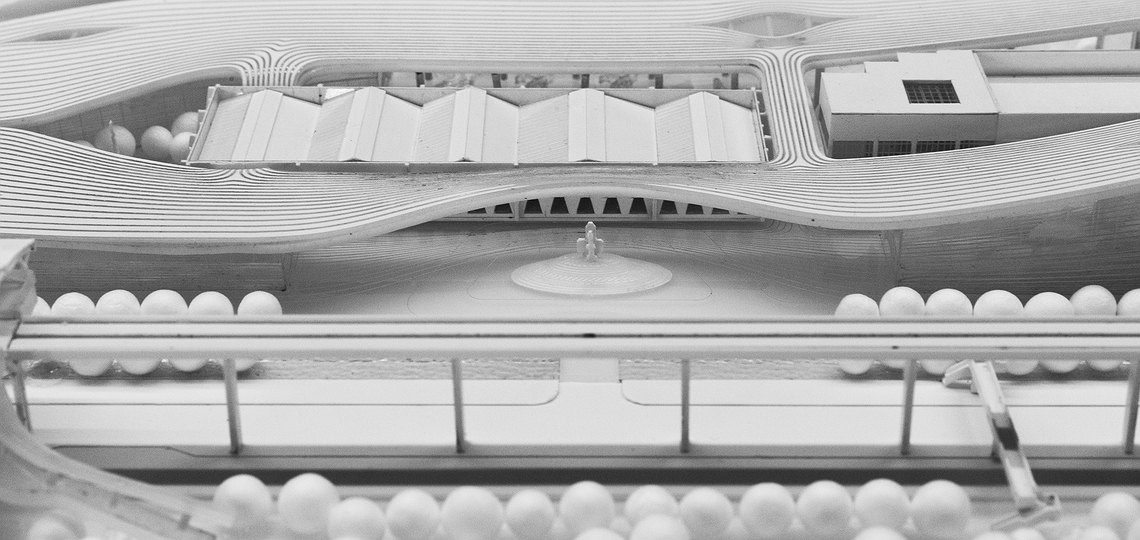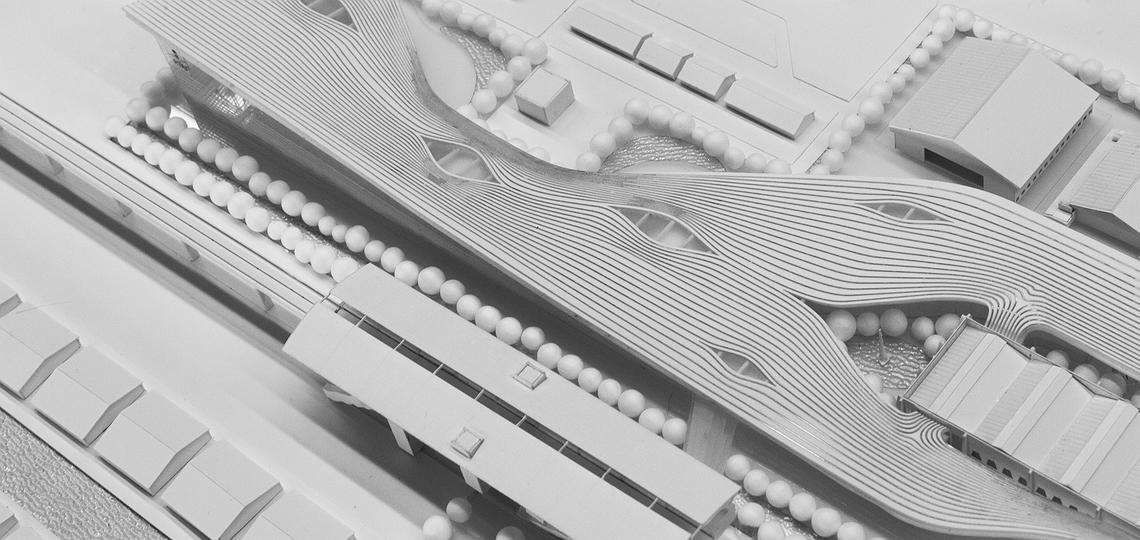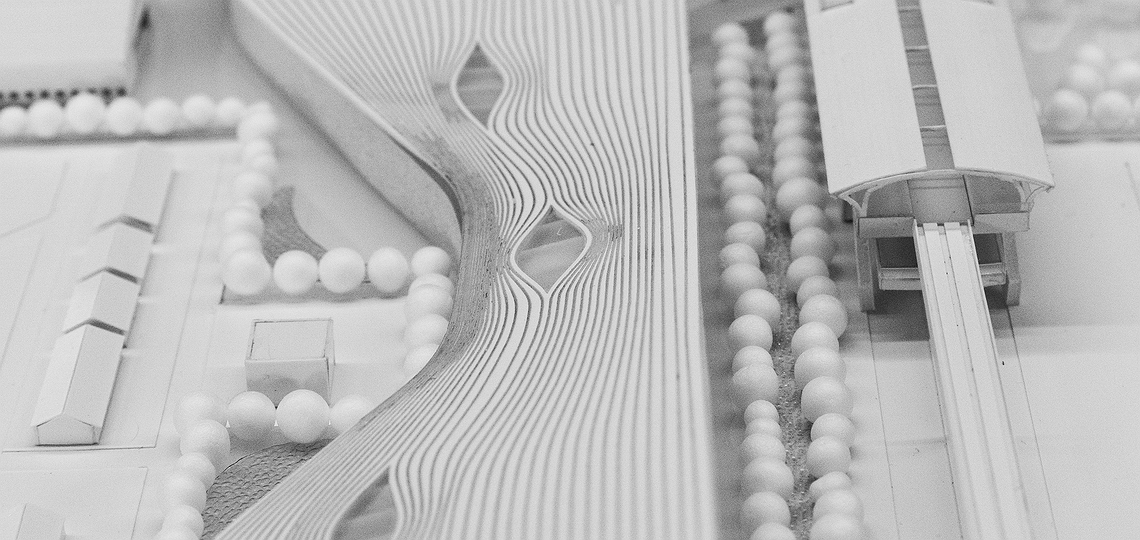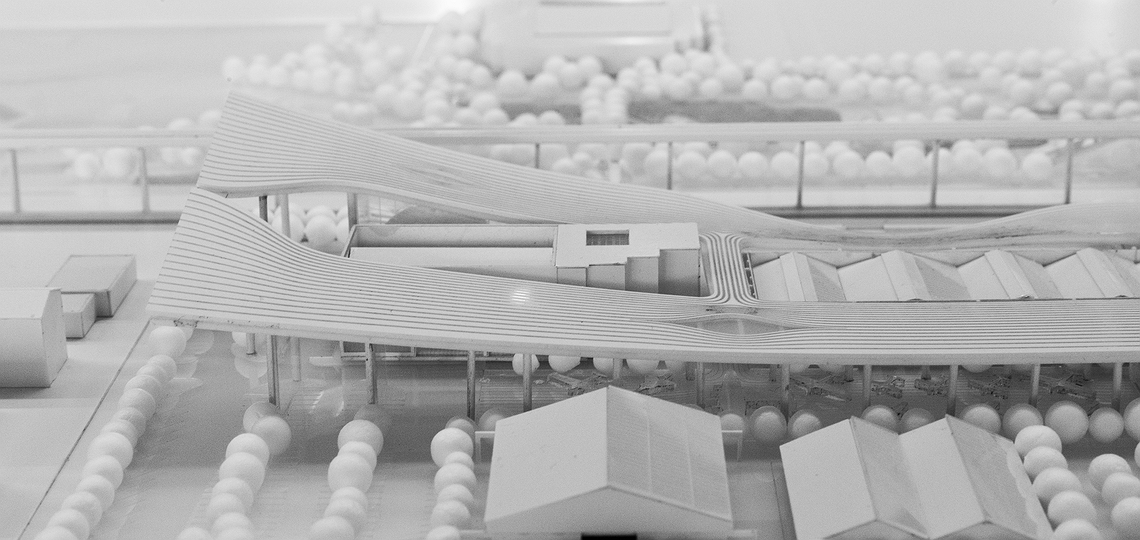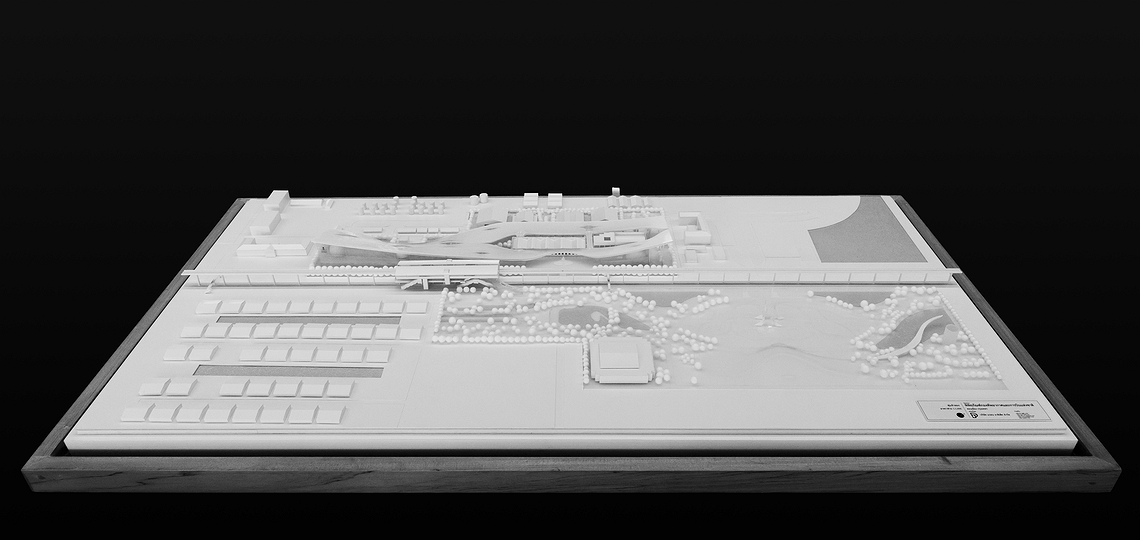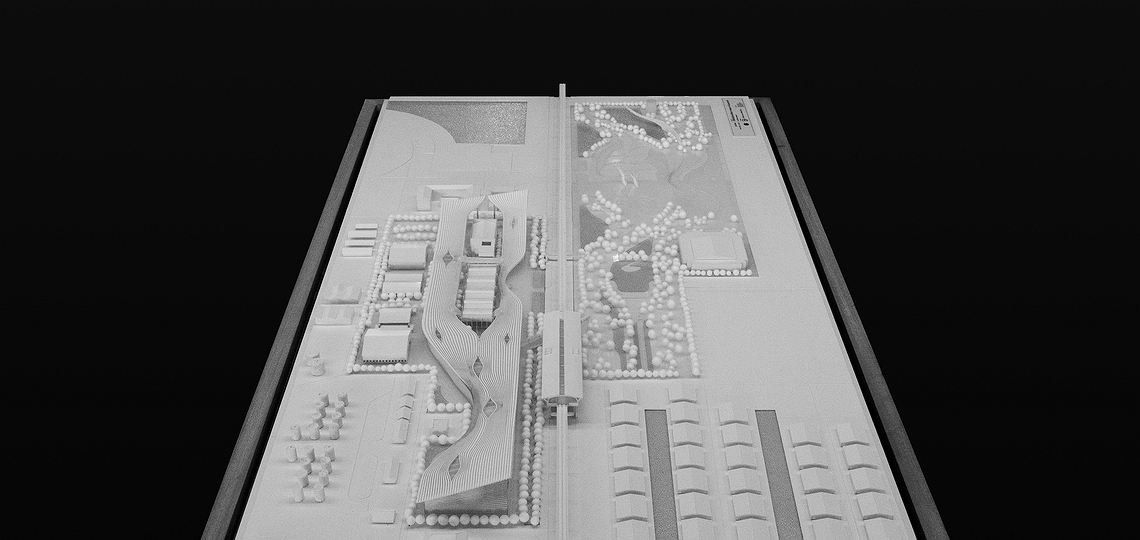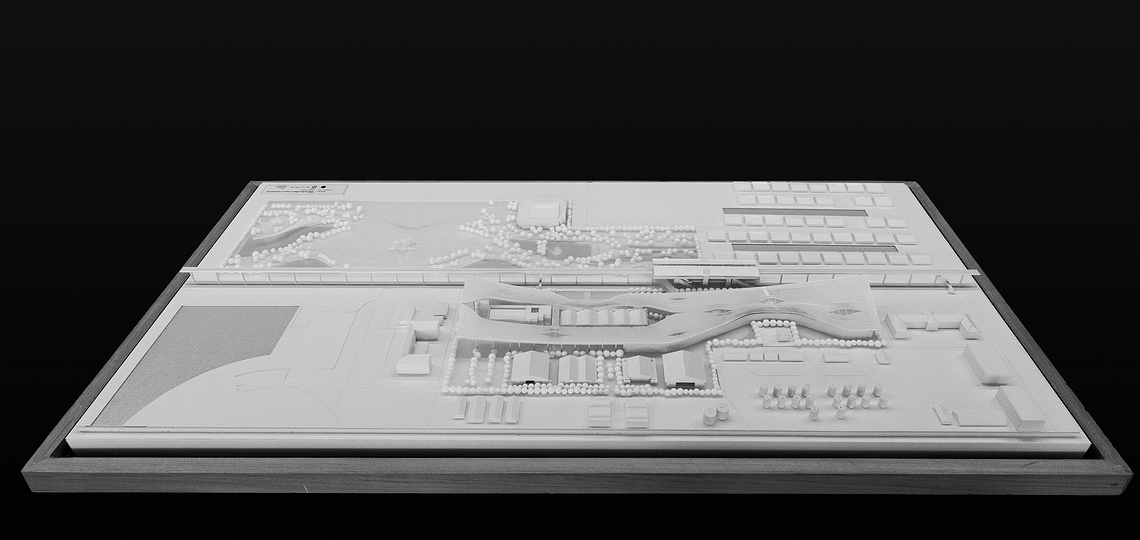Royal Thai Airforce museum located on high potential site on Phahon Yothin road near Don Muang Airport. In the nearby future, the site can be accessed by various public transport system such as BTS sky train. The large plot of land with a lot of trees creates a pleasant atmosphere suitable for public space and learning center for aviation research.
Our design aims to create architecture that responds to the existing context by design overall pattern inspired by "Aerodynamic" pattern, which is a simulation of wind current around the object. The pattern also represents a human endeavor to understand aviation technology.
The aerodynamic pattern on floor pattern and roof unified the whole site and connected the new museum to old buildings and hangars. The space between the buildings will accommodate various public activities, which adding value to the project.
Building's dynamic roof form rising toward the sky represent aerospace power of Royal Thai Airforce. Origin of roof curvature is centered at King Rama 5 statue then spread and rise on both side to represent bright future of the Airforce.
Facade and building enclosure consists of glass opening and solid wall strips, the proportion of opening gradually increased from the bottom to top. Functionally, more solid walls on ground level provide safety and privacy for Airforce activities around the museum.
Important exhibited objects inside the museum are highlighted by floor pattern that flow around the object in the same manner as air current around an airplane wing. Ceiling stripe pattern also flow around exhibited object create skylight that let the sunlight focus on museum centerpiece.
To preserve the existing buildings with various architectural style, there is a gap between aerodynamic pattern roof and the buildings to let visitors see the building form. The coexistence of modern museum and old buildings became the metaphor of Royal Thai Airforce history.
